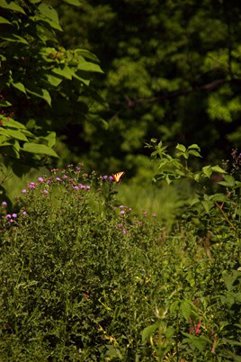In this StarTribune article, Adam Baker, technical advisor at the Davey Institute, talks about milkweed species and how they support monarch butterflies.

Monarchs need milkweed to survive. Good thing there are plenty of garden-friendly species of this "weed."
Milkweed is the liver of the garden world. You know it's good — good for pollinators in general, and monarchs in particular. In fact, milkweed is the only plant on which monarchs lay their eggs and that provides food for monarch caterpillars. It also is a major source of necessary nectar for adult monarchs. But it can be hard to like.
Common milkweed (Asclepias syriaca), which can grow to be 5 feet tall, is a bit gangly. And with its clusters of tiny, inconspicuous flowers, it's not much of a looker. Besides, it's unruly. In fall, its seed pods split to let loose a passel of seeds, and it spreads by runner, making it a less-than-welcome native in many a well-planned garden.
Thank genus there are more than 100 species of milkweed, many of which "are appropriate for you backyard garden — and even for formal gardens — because they behave well," says Adam Baker, a pollinator ecologist and a technical adviser for Davey Tree.
To continue reading about the different milkweed species and how they benefit monarch butterflies, click here.
The Davey Tree Expert Company, headquartered in Kent, Ohio, provides research-driven tree services, grounds maintenance and environmental and utility infrastructure consulting for residential, utility, commercial and environmental partners in the U.S. and Canada. As one of the top ten largest employee-owned companies in the U.S., Davey's 12,000 employees have been dedicated to creating and delivering sustainable solutions since 1880. Apply today to join the Davey legacy, and learn about how we're growing with our new SEED Campus.





